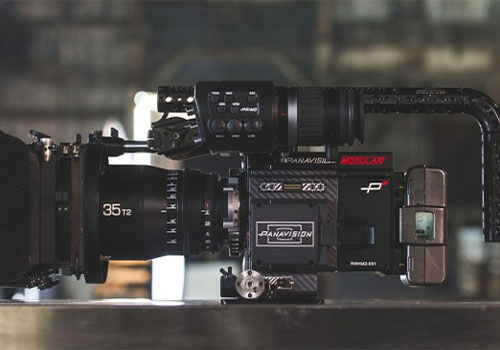News
Panavision announces new lenses and accessories
Panavision announces new high-end lenses and modular accessories for DSMC2 cameras at Cinegear 2018.
Anamorphic
The combination of the DXL2’s large sensor and anamorphic glass. Panavision’s press release describes the Ultra Vista range as offering “classic Panavision elliptical bokeh and horizontal flare.” Anamorphic lenses, all other things being equal, will have the sharpness and cleanliness of spherical, so the 35 megapixels of the DXL2 will be used to some extent to characterize and record the optical aberration of the lens.
In pursuit of a more straightforward look, which Panavision calls Primo look, and which has been compared to Zeiss’ Ultra Primes, the PanaSpeed range has been announced. As the name suggests, the idea is that these are fast, at T1.4, and Panavision suggests that they “will be the fastest large-format lens option available on the market” at launch in Q3 this year. The combination of large sensor coverage and minimal F-stop means that PanaSpeeds can be somewhat bulky, especially if they are designed for consistent or near-consistent control location and size, at which point they will be as long as the focal length requires and as wide as the widest focal length requires.
Primo X
For lightweight, Panavision has announced the Primo X range, intended to provide 14mm T1.1 and T1.6 lenses, plus a 24-70mm T2.8 zoom. They are weather-sealed and intended for use on drones and gimbals, perhaps as part of the company’s initiative to provide Panavision-style rigs and accessories for Red’s existing DSMC2 range. The DXL cameras are really too big to follow but the more massive drones, so this makes sense. Rounding out the new lens selection, for people interested in a less fussy look than the First X lenses, is the series, a “traditionally designed spherical lens with a glamorous, rounded, smooth roll.” According to Panavison’s description, this will be the lens set of choice for vintage candlelight dramas and skin care commercials.
LCND
The LCND filter, which uses liquid crystal technology to provide a variable ND. Reading between the lines, this is not a continuously variable filter like the electronic ND’s on some recent Sony cameras, but it will save a bit of time swapping filters and a bit of carrying capacity. Drones are becoming increasingly important, and with the potential for remote control, an electronic ND could be a real time saver.
Finally, they have announced the DXL-style accessory kit for Red’s cameras, called DXL-M.



